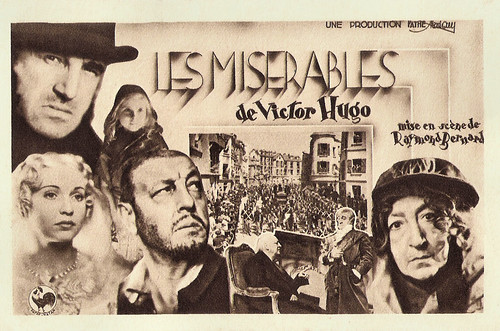
French postcard by A. Breger, Frères, Paris. Photo: Pathé Natan. In the centre: Harry Baur as Jean Valjean in Les Misérables (Raymond Bernard, 1934), based on the novel by Victor Hugo.
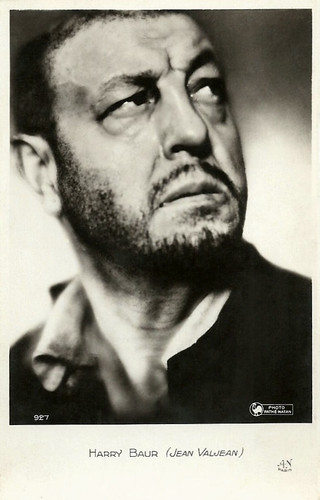
French postcard by A.N., Paris, no. 927. Photo Pathé Natan. Harry Baur as Jean Valjean in Les Misérables (Raymond Bernard, 1934).
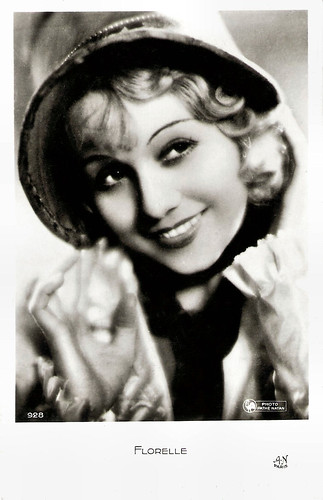
French postcard by A.N., Paris, no. 928. Photo: Pathé-Natan. Florelle as Fantine in Les Miserables (Raymond Bernard, 1934).

French postcard by A.N., Paris, no. 930. Photo: Pathé Natan. Orane Demazis as Eponine in Les Misérables (Raymond Bernard, 1934).
His only crime was stealing a loaf of bread
In Les Miserables (1934) film director and co-scriptwriter, Raymond Bernard follows the lives of numerous people over the course of 20 years in 19th century France. The plot is weaved together by the story of an ex-convict named Jean Valjean (Harry Baur) on the run from an obsessive police inspector.
Jean Valjean struggles to redeem himself, but his attempts are continually ruined by the intrusion of Javert (Charles Vanel). Javert is a cruel, ruthless police inspector who has dedicated his life to pursuing Valjean, whose only crime was stealing a loaf of bread, for which he received 5 years in jail. He serves an additional 14 years for escape attempts.
The film, like the novel, features numerous other characters and subplots, such as Fantine (Florelle), a woman forced into prostitution to pay two cruel innkeepers, the Thénardiers (Charles Dullin and Marguerite Moreno), for looking after her daughter Cosette.
Another subplot is the story of the revolutionaries, including Marius (Jean Servais), a young man who falls in love later on in the film with the now-adult Cosette (Josseline Gaël).
The film is, for the most part, faithful to the original novel, however, there are some differences: Javert is presented as considerably less sympathetic than in the book, largely portraying him as the pinnacle of the cruelty in 19th century France. Valjean is released after having saved a house from caving in, not because his time is served. Valjean dies shortly after his confession to Marius, the day after the wedding, due to a wound that appeared to have become infected (probably due to the sewer water). He does not describe Fantine to Cosette.

Belgian collectors card, which promotes the screening of the film at Majestic, Gand. Photo: Pathé-Natan. Harry Baur as Jean Valjean in Les Misérables (Raymond Bernard, 1934). Caption: Une tempête sous un crane.

Belgian collectors card, which promotes the screening of the film at Majestic, Gand. Photo: Pathé-Natan. Josseline Gaël as Cosette and Jean Servais as Marius in Les Misérables (Raymond Bernard, 1934). Caption: Les Thénardier.

Belgian collectors card, which promotes the screening of the film at Majestic, Gand. Photo: Pathé-Natan. Orane Demazis as Eponine and Emile Génevois as Gavroche in Les Misérables (Raymond Bernard, 1934). Caption: Les Thénardier.
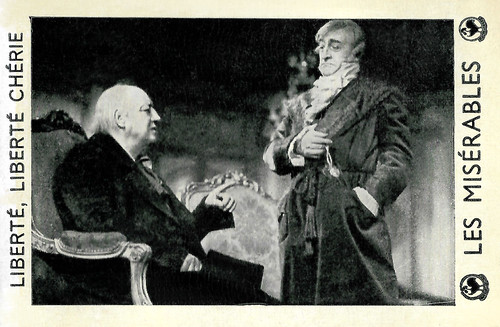
Belgian collectors card, which promotes the screening of the film at Majestic, Gand. Photo: Pathé-Natan. Harry Baur as Jean Valjean and Max Dearly as Les Misérables (Raymond Bernard, 1934). Caption: Liberté, liberté, chérie.

Belgian collectors card, which promotes the screening of the film at Majestic, Gand. Photo: Pathé-Natan. Harry Baur as Jean Valjean and Charles Vanel as Javert in Les Misérables (Raymond Bernard, 1934). Caption: Liberté, liberté, chérie.

Belgian collectors card, which promotes the screening of the film at Majestic, Gand. Photo: Pathé-Natan. Josseline Gaël as Cosette and Jean Servais as Marius in Les Misérables (Raymond Bernard, 1934). Caption: Liberté, liberté, chérie.
The reasons for the film's success are manifold
Les Miserables (1934) was presented in three parts respectively called: 'Une tempête sous un crâne' (Tempest in a skull), 'Les Thénardier' (The Thenardiers - the names of the couple of villains) and 'Liberté, liberté chérie' (Freedom, dear Freedom).
Reviewer Fernies at IMDb thinks the reasons for the film's success are manifold: "Firstly the detail and therefore the strength of the original are largely retained. Characters are properly fleshed out, and just as in the original we feel we share the characters' lives and get to know and care about them. The depth and number of characters are not sacrificed to considerations of time and commerce."
"Although some of the photography appears dated by modern standards, Raymond Bernard's literate script and direction are stimulating and advance the narrative at a steady pace (despite the impression created by the running time). He is masterful in the creation of atmosphere in both intimate and crowd scenes. For example, the film is quite spectacular in its depiction of the 1832 uprising, yet it is deeply moving in the scenes involving Valjean and the Bishop. The music (by Arthur Honegger) has great dignity and is entirely apt to the tenor of the film and the themes it embraces."
"However, if the real strength of the piece is in the depth and conviction of its characters, their cinematic success is due in no short measure to the quality of the acting. Fantine is perhaps a little melodramatic for modern tastes, and Javert lacks a truly tragic quality, but all told the performances are faithful to the original and convincing, and none more so than Harry Baur as Valjean. His immense physical presence and slow, controlled delivery, combined with his ability to express his inner feelings with little more than a look or a moment's hesitation command our respect and sympathy, making him the perfect incarnation of the tormented but determined Valjean."

French postcard by A.N., Paris, no. 931. Photo Pathé Natan. Emile Génevois as Gavroche in Les Misérables (Raymond Bernard, 1934).

French postcard by A.N., Paris, no. 936. Photo: Pathé Natan. Harry Baur as the older Jean Valjean in Les Misérables (Raymond Bernard, 1934).
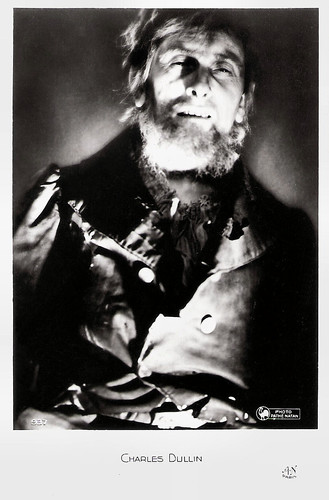
French postcard by A.N., Paris, no. 937. Photo: Pathé Natan. Charles Dullin as the evil Thénardier in Les Misérables (Raymond Bernard, 1934).
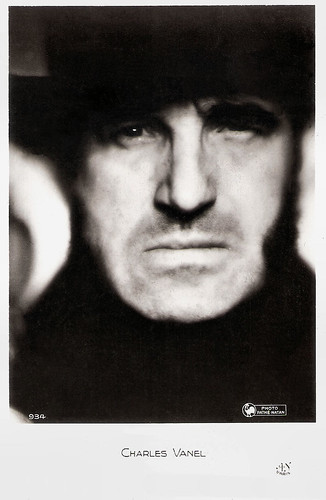
French postcard by A.N. Paris, no. 941. Photo Pathé Natan. Charles Vanel as Javert in Les Misérables (Raymond Bernard, 1934).
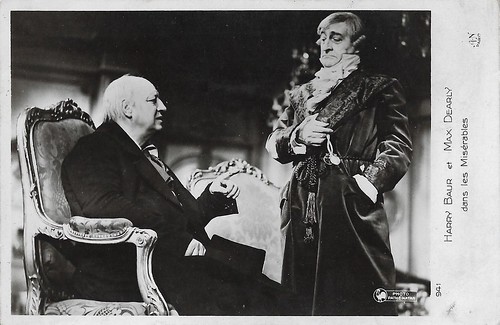
French postcard by A.N. Paris, no. 941. Photo Pathé Natan. Harry Baur as Jean Valjean and Max Dearly as Gillenormand in Les Misérables (Raymond Bernard, 1934).
Sources: Wikipedia and IMDb.
No comments:
Post a Comment